Volga river is the place for some animals. There are 5 animals that live in Volga river. Those are Russian desman, Russian sturgeon, pelicans, flamingo and Caspian seal. They are both endemic and endangered animals. After knowing such information, you need to know 6 most interesting facts of Volga river in Russia.
1. The Largest River in Europe
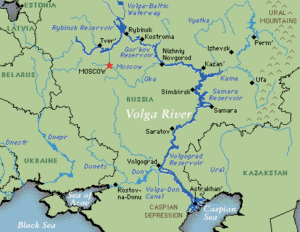 Volga river is the largest river in Europe in term of length, discharge and watershed. Its source is in Valday Hills, about 225 meters above sea level. Valday Hills is in northwest of Moscow which is about 320 km from Saint Petersburg.
Volga river is the largest river in Europe in term of length, discharge and watershed. Its source is in Valday Hills, about 225 meters above sea level. Valday Hills is in northwest of Moscow which is about 320 km from Saint Petersburg.
As it becomes the longest river in Europe, it flows for 3,700 km long before discharging into Caspian sea. Moreover, the size of its watershed is about 532,821 square miles. Besides, 40% of Russian people live near it, including a half of Russian farmers.
Furthermore, Volga river delta is about 160 km length that occupies more than 7330 square miles. It includes 500 channels and small rivers. Moreover, its system consists of 151,000 intermittent and permanent rivers with a total length of 357,000 miles.
2. Creating Many Main Branches
 As it becomes the largest river in Europe, Volga river consists of three parts. Those are upper Volga, middle Volga and lower Volga.
As it becomes the largest river in Europe, Volga river consists of three parts. Those are upper Volga, middle Volga and lower Volga.
Upper Volga stretches from Valday Hills up to confluence of the Oka. Middle Volga starts from the confluence of the Oka and ends at confluence of the Kama. From Kama, Volga river flows through the end of its mouth at Caspian Sea and that becomes the lower Volga.
Then, the flow continues until it creates delta that makes Buzan its beginning. In addition to Buzan, some of Volga delta main branches include Bakhtemir, Bolda, Kamyzyak and Staraya (Old) Volga.
3. It Is Small Stream Before the Entrance of Some Tributaries
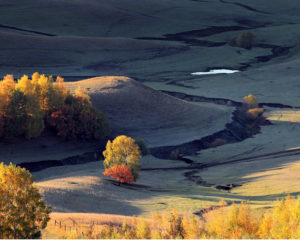 Although Volga river is the largest and the longest river in Europe, it is not a big river at start. It starts as small stream that flows from upper Volga to the lower Volga. During its journey, it becomes a river after the entrance of some of its tributaries.
Although Volga river is the largest and the longest river in Europe, it is not a big river at start. It starts as small stream that flows from upper Volga to the lower Volga. During its journey, it becomes a river after the entrance of some of its tributaries.
Then, it receives water from Selizharovka River after passing through some small lakes. After that, it turns northeastward and gets bigger with the inflow of Vazuza and Tvertsa rivers at Tver. Then it passes through Rybinsk Reservoir along with other rivers and proceeds southeastward until it arrives at Middle Volga.
At this point, Volga river doubles in size as it receives waters from Sura and Sviyaga rivers. Then, it turns south into reservoir at Samara where major tributary Kama joins it to become the mighty river. Then it turns to southwestward and branches to southeast to Caspian Sea.
4. Yaroslavl City
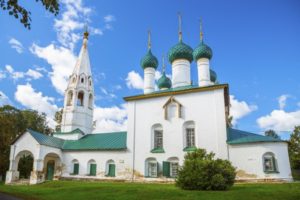 Volga basin is the home to 11 out of 20 big cities in Russia. One of them is Yaroslavl city. It is at the confluence of the Volga and Kotorosi river. It is precisely at the north of Kotorosi river’s mouth at the right bank of larger Volga river. Moreover, it consists of a number of territories which are spread at the south of Kotorosi and at the left bank of the Volga.
Volga basin is the home to 11 out of 20 big cities in Russia. One of them is Yaroslavl city. It is at the confluence of the Volga and Kotorosi river. It is precisely at the north of Kotorosi river’s mouth at the right bank of larger Volga river. Moreover, it consists of a number of territories which are spread at the south of Kotorosi and at the left bank of the Volga.
The city also becomes one of the most attractive destinations for tourists. It is famous for its cathedrals, like Assumption Cathedral, and beautiful frescoes. It also has several churches, including Church of Elijah the Prophet and Epiphany Church. As it lays near the largest river in Europe, Yaroslavl uses it for transportation. Precisely at Yaroslavl river port, the people carry out import process of 3.5 tonnes of freight a year. Due to climatic condition, the water transportation is only available for 6 month that starts from May to later October.
5. It is Navigable
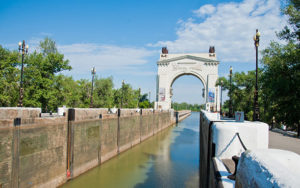 Not only people of Yaroslavl city who use Volga river for transportation, but also most Russian people do. It is navigable for some 2,000 miles of its length and there are more than 70 tributaries that make navigation possible. Russian people mostly use it for inland transport and shipping. All dams in the rivers are equipped with ship locks. This makes vessels of varied dimensions be able to travel from Caspian Sea to the upper Volga at ease.
Not only people of Yaroslavl city who use Volga river for transportation, but also most Russian people do. It is navigable for some 2,000 miles of its length and there are more than 70 tributaries that make navigation possible. Russian people mostly use it for inland transport and shipping. All dams in the rivers are equipped with ship locks. This makes vessels of varied dimensions be able to travel from Caspian Sea to the upper Volga at ease.
The major ports on the Volga are Astrakhan, Kamyshin, Kazan, Nizhny Novgorod, Rybinsk, Samara, Saratov, Tver, Ulyanovsk (formerly Simbirsk), Yaroslavl and Volgograd.
Moreover, 80 percent of the total freight comes from construction materials and raw materials. Meanwhile, other cargoes include salt, foodstuffs, coal, petroleum and petroleum products, tractors and agricultural machinery, automobiles, chemical apparatus, and fertilizers.
6. It is a Home for Endangered Animals
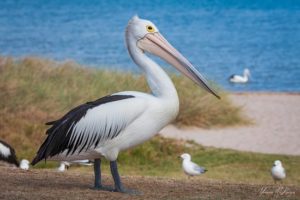 There are a lot of animals living in Volga river. Some of them are russian desman, pelicans, Caspian seal, sturgeon and flamingo. One of the most famous animals that lives in the river is sturgeon.
There are a lot of animals living in Volga river. Some of them are russian desman, pelicans, Caspian seal, sturgeon and flamingo. One of the most famous animals that lives in the river is sturgeon.
Sturgeon is a kind of fish that makes Russian famous for its fine caviar. It is also a kind of fish that experience over fishing and almost in the brink of extinction. The biggest fish which is found in the river is Beluga sturgeon. It can reach up to 800 cm long and weight 1,571 kg.
The river is also the house of big birds, such as pelicans and flamingos. There is no place in Russia for those bird to live and grow other than Volga river.
Those are 6 most interesting facts of Volga river in Russia. You can also read endemic animals living in Caucasus mountain, endemic animals that you can only find in Russia, animals that lives in Siberian Tundra and most dangerous animals in Russia.
